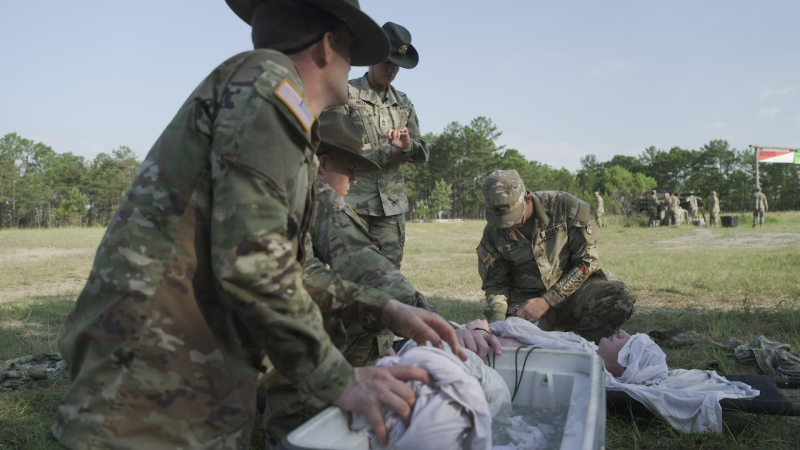Soldiers use this fast, cheap solution to quickly cool down in the scorching heat. And you can, too.
It almost seems too simple to be true, but research shows submerging your forearms and biceps in ice cold water can prevent overheating. It's a technique the U.S. Army has embraced at bases across the country.
"It's low-tech, it's inexpensive, it's easy to implement," said Lt. Col. Dave DeGroot, who runs the Army Heat Center at Fort Moore. "It's a bucket of water."
When immersed for five minutes, an ice bath can lower core body temperature by as much as 1 degree Fahrenheit. Given that normal body temperature ranges between about 97 and 100 degrees Fahrenheit, one degree of internal cooling makes a significant difference.
"Your car has a radiator. Well, so do we. It's our skin," said DeGroot, who is tasked with developing data-driven solutions to mitigate the effects of heat on soldiers.
"Our blood is going to cool off and circulate back to the core and eventually, with several minutes of exposure, bring core temperature down," he explained.
The Army has 1,000 arm immersion tables in use across the country. Through a licensing agreement with the Army, immersion tables are also used at firefighter training centers, NASA launch sites, and by construction companies and college athletic departments.
Arm immersion tables are long, narrow, insulated troughs that stand alone on four legs. Six to eight soldiers can submerge their arms at the same time. Some troughs are even mounted to trailers so they can quickly be moved to remote parts of the base.

"It's an introduction to the trainees that heat is a threat," DeGroot said. "We need to take steps to counteract it, to mitigate it. And arm immersion is one of those tools."
Sometimes, prevention isn't enough, and heat becomes an emergency. In those cases, the Army has another unique intervention, called ice sheeting.
"The intent is we want to cover as much surface area on the body as possible," said senior drill sergeant Elizabeth Meza Hernandez.
Using bed sheets that have been soaking in a cooler of ice water, Sgt. Meza Hernandez demonstrated how it works. She wrapped the ice-cold bed sheets around a soldier volunteering to be a victim of heat stroke.
The idea is to rapidly cool severe heat victims on site before transporting them to the hospital to prevent severe heat illness or even death.
"We go ahead and place sheets into those hot spots where the torso meets the head and the arms, so the groin, the armpits, the neck and the head," she said.
Fresh, cold sheets get swapped in every three minutes until an ambulance arrives. She said she has done this on at least 10 patients.
DeGroot's research shows ice sheeting is an effective emergency treatment. In 2019, before ice sheeting was used at Fort Moore, there were 95 cases of heat stroke, with no deaths. In 2022, after ice sheeting began, the number was down to 35 victims, with no deaths.
The gold standard of rapid cooling is full body immersion, where a person is placed in a body-bag full of ice.
In the field that that's not always possible, and DeGroot says, when it comes to saving lives, ice sheeting, developed at Fort Moore, is just as effective.
"We don't have as fast a cooling rate, but what we do have, and what we've published on here, is we have equally good survival," he said.
As climate change heats up our planet, the Army's solutions are cheap, fast and effective — and more important than ever.
- In:
- Climate Change
- Heat
- United States Military
- Heat Wave
- U.S. Army

David Schechter is a national environmental correspondent and the host of "On the Dot with David Schechter," a guided journey to explore how we're changing the earth and earth is changing us.
TwitterDisclaimer: The copyright of this article belongs to the original author. Reposting this article is solely for the purpose of information dissemination and does not constitute any investment advice. If there is any infringement, please contact us immediately. We will make corrections or deletions as necessary. Thank you.






